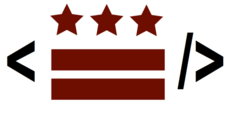How can education data help you?

Image courtesy of Code for DC
Is there data about education in DC that you’d like to have? Let us know before this weekend’s hackathon, when data enthusiasts and experts will gather to analyze it.
Almost a year ago, Greater Greater Education kicked off with a post about how open data can help families with confusing school choices. Since then, several DC education agencies have released data in formats that are easy to reuse and analyze, providing opportunities for parents and advocates to support schools based on facts. But there are still a lot of gaps in the information that families and advocates need.
On the side of progress, the Office of the State Superintendent of Education (OSSE) now publishes data that feeds school profiles and report cards school profiles and report cards on the Learn DC website.
The DC Public Charter School Board has published the data behind the school equity reports. And the Deputy Mayor for Education (DME) has begun to publish some of the data being analyzed as part of the school boundary review process.
As a result we have a better view into student commutes at the neighborhood and school levels, and we can compare student enrollment at the school level at various points throughout the school year. Families and stakeholders can weigh in on the future of school boundaries and feeder patterns from an informed perspective. (Maybe it’s not surprising, but did you know that 8 out of the 10 schools with the highest in-boundary participation rates in DC are in Ward 3? A quick sort of the DME’s data will show this).
While these are certainly steps in the right direction, there’s still a lot of unreleased information that would create opportunities for meaningful collaboration between government and citizens. The ongoing review of school boundaries and feeder patterns is a perfect example of a situation where more data would help.
The DME has created a transparent process meant to engage parents and stakeholders, but it’s difficult to provide meaningful input without first understanding the effects of current policies on enrollment and school choice. For example, we know that DCPS loses children at 5th grade to charters, but how many? Where are they going? Are there patterns? Can identifying these patterns help us make recommendations?
This weekend, over 400 people will attend Open Data Day in DC, an annual citizen-organized event where programmers, data experts, and regular people come together to hack away at problems using technology. The event in DC is one of many taking place around the world. Several of those in attendance in DC will be parents like me, hoping to enlist the help of experts in understanding trends in data relating to school boundaries and feeder patterns.
Last year’s Open Data Day was marked by OSSE’s release of 12 datasets, kicking off a partnership between OSSE and education stakeholders. We’re hoping OSSE will continue to grow this partnership by releasing additional data.
If there’s education-related data you’d like access to, please tell us what it is and how you plan to use it.
